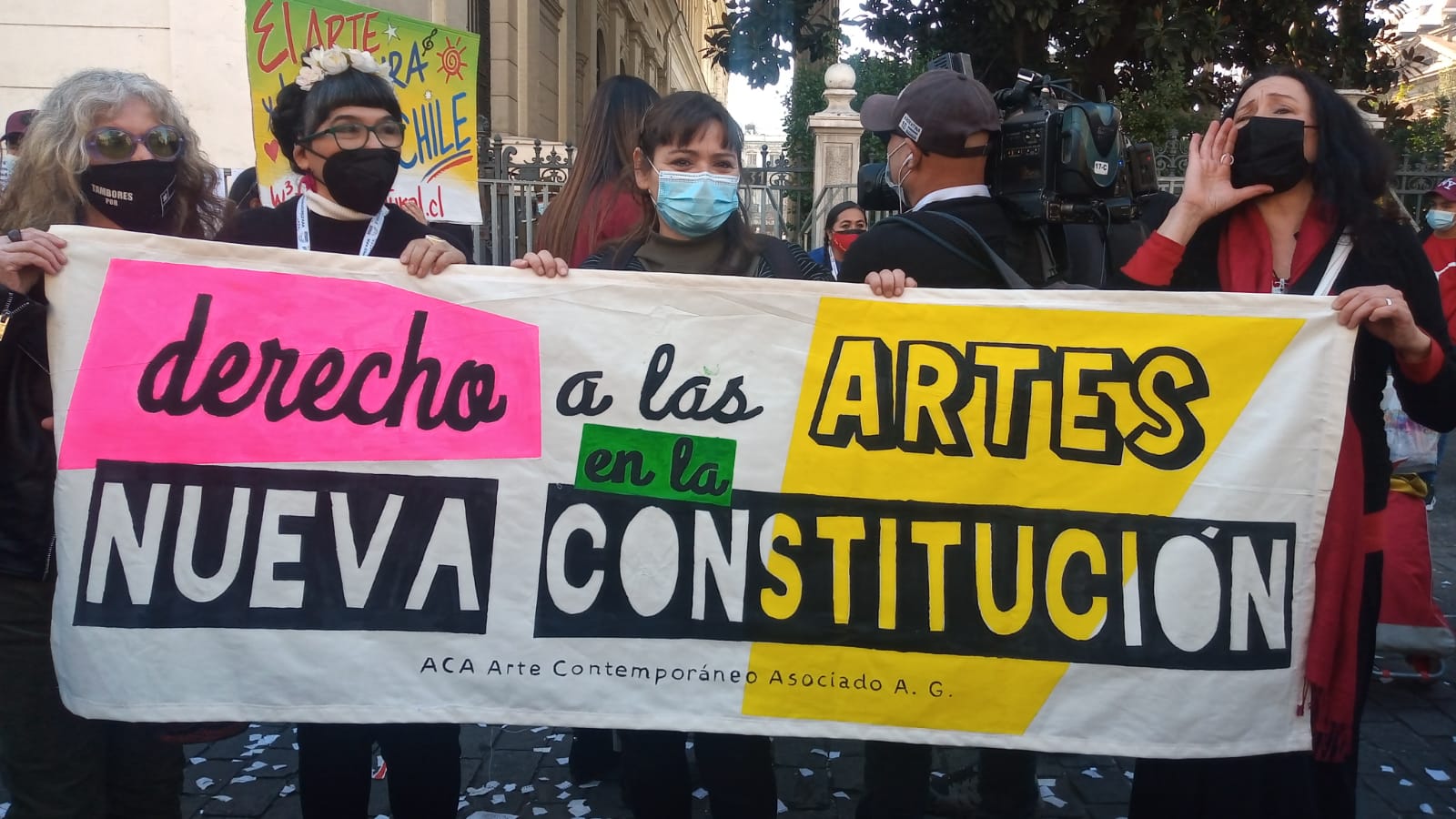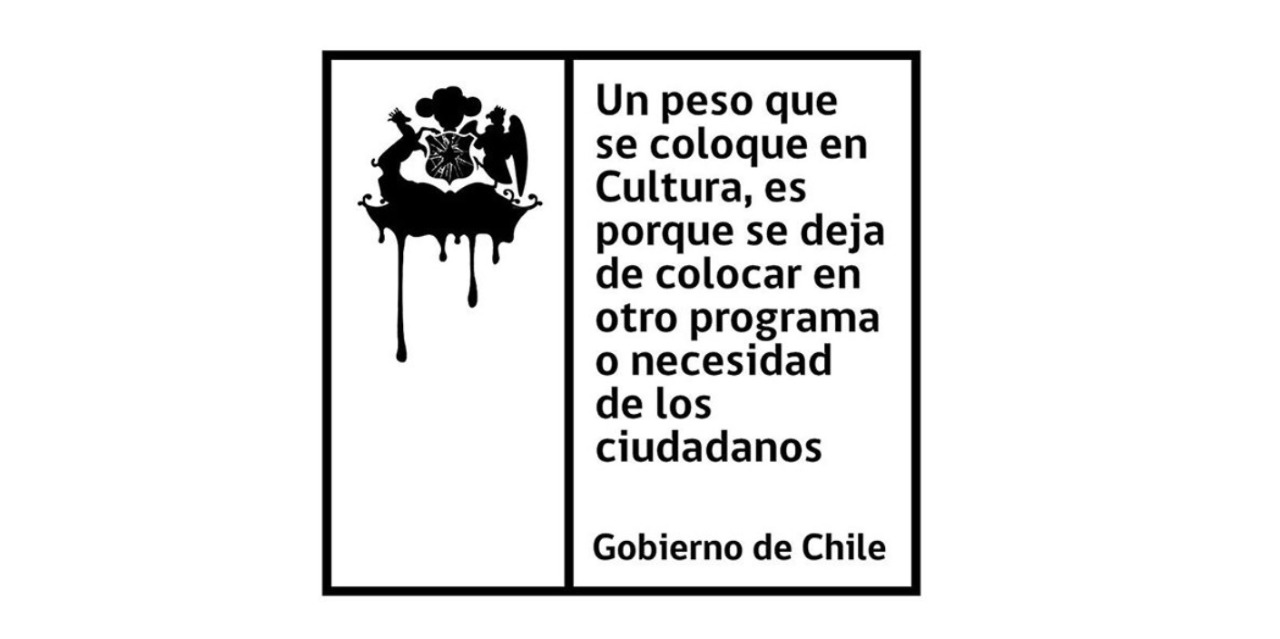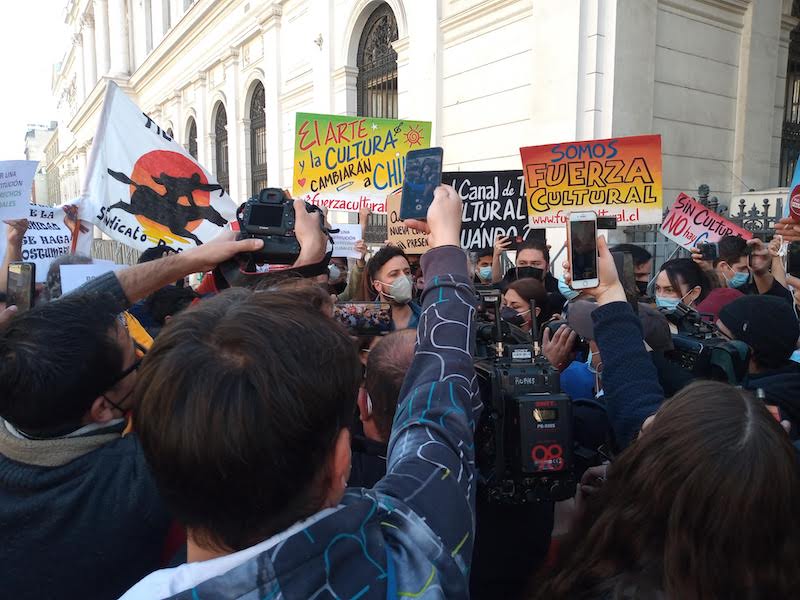Reports - Labor rights Art workers - Chile
Monserrat Rojas Corradi, Diego Parra Donoso
Reading time: 8 minutes

23.09.2021
The researcher and curator Monserrat Rojas Corradi and the critic and art historian Diego Parra Donoso explain the long process carried out by the agents in the world of culture, arts, and heritage to be recognized as a vulnerable sector in the context of the Pandemic, focusing on a specific aspect of contemporary art guild work linked to the allocation of social aid for their community.

I
How to redefine the role of culture and arts in times of pandemics in a neoliberal society? Going to a shopping mall is more valued than visiting a museum, a play, an opera or a concert. Perhaps this question sounds superficial and obvious, but after a long period in which we have been unable to work, it is necessary to question it.
The Latin American context imposes certain principles of reality that make this question complex to address in a unitary way and with a satisfactory answer (especially if we compare it with countries where the “welfare state” prevails). In Chile, at the local level, the upper class is not empathetic with the most disadvantaged classes, nor does it value the arts sector despite the fact that it allows access to what the French sociologist Pierre Bourdieu called cultural capital, who links access to these formative instances with the “cultivated” of the subject. Although it is usually thought; the greater the cultural capital, the greater the valuation of artistic work, something happens with our elites who do not recognize these activities as valuable, both from the private business sector and the state. In Chile, it is enough to note the absence of the notion of “wage” associated with artistic work, where it is always remunerated in transgressive ways which do not directly link hours of work with a certain amount of money; these working conditions for art workers prevent any kind of dignity in what we do.

Should we define what culture is again? This is a long unresolved discussion, but we like the definition given by Néstor García Canclini: “of the few consensuses that exist today in studies on culture, there is no consensus”. This could explain why in many cases the State does not know where to classify us in the labor field, which implies we are not recognized as (art) workers. It is usual in official texts, in fact, to find the notion of “creator” as the only field-specific reference, on the one hand, it responds to a nineteenth-century imaginary of the romantic artist; and on the other, it is exclusively linked to artists as makers (only those who produce objects), leaving aside all the mediating agents that make up the art ecosystem, world, circle or institution (pedagogical mediators, curators, assemblers, art historians and critics, etc.).[1]
By contrast, if mining workers, garbage collectors, public transportation workers go on strike or stop working, the whole country comes to a halt and the government has to enter into negotiations. If art stops, nobody cares. In this context, several unions and guilds have come together to put an end to this indifference. On the one hand, they tried to negotiate with the government different ways of dealing with the disasters produced by the pandemic, creating work tables, but the Ministry of Cultures did not agree to any request and the unions finally chose to give up. Did this imply any kind of change? No. The indolence of the authorities, we believe, is explained by the lack of social recognition of artistic practice as a job.
The idea of art as a hobby, as a privileged dedication, or worse, as a frivolous activity, still persists.
In November 2020, the Minister of Cultures said: “A peso that is placed in Culture is because it is not placed in another program or need of the citizens.” This made us recognize as a sector the null valuation and recognition of our work from the highest instance of the State. That is to say, if the highest level of government does not consider we are a contribution to society, it is difficult to fight for more visibility. Added to this is the popular belief in which “artists” are only television actors and “famous” musicians, preventing us from seeing there are many of us working in this field, far removed from the glamour and luxury that characterize the former. There is a prejudice towards the sector: being an arts worker means that you do not work. We are not looked upon favorably.

Until now, more than a year and a half after the beginning of the pandemic, as an artistic sector we are still waiting for the state to change the relationship it establishes with us. Stop being seen only as an expense and become recognized first as workers, and second, as transforming agents in the broad context of culture.
Many of the political and cultural changes that are currently taking place in Chile (because of the Constitutional debate) will be worked by artistic agents, who will give shape and meaning to a period we are still experiencing too closely. These agents deserve a new treatment outside the traditional cost/benefit logic. We would not want to give in to strictly economistic arguments to assert our importance as a sector, but if we have to assume the technified and bureaucratic voice of the system to achieve our political objectives, we will do so as many times as necessary. The arts are a necessary cultural manifestation for societies and they can no longer be understood as a luxury service only for an elite, but to change that paradigm we must first be able to recognize the dignity of artistic work. In the meantime, and following the recent refusal to allow Bono cultura covid, we will continue to insist on defending the value of our creative work.
Recovering some of the history of this process of labor precariousness of the arts in Chile, one of the causes of this phenomenon could be related to the beginnings of the so-called “Democratic Transition” (1990). In this period, several political parties (including the Christian Democratic Party, who supported the military coup), organized themselves into La Concertación de Partidos por la Democracia (CPD) and governed uninterruptedly for 20 years. The CPD —an agglomerate of several center-left parties — related to the artistic sector from a place that denied the critical potential of its expressions, and simply dedicated itself to thinking of more or less original methods of financing “cultural” activities. It produced, then, a sort of technified culture where research, creation, curatorship, and mediation had no place, an issue that led to a professional deterioration of our sector. What was proposed was a vision of culture in a massive key, where the alienated subjects of the aesthetic experience are nothing more than “cultural consumers”.
Coordinadora Intersectorial Cultural de Emergencia (CICE) was formed under the imperative need to bring together the largest number of arts guilds in order to confront the pandemic and negotiate collectively with the government.
This tool is an iconic targeting method of Chilean neoliberalism, originally devised by the Dictatorship. At that time, it was called “Ficha social” and its function was to optimize the use of fiscal resources only on the poorest population, who were included in a sort of “poverty meter”, and in this way, the notion of “universal right” in Chilean society disappeared: only those who the state considered the poorest had the right to obtain something from it, the rest had to scratch with their own fingernails.
Comments
There are no coments available.